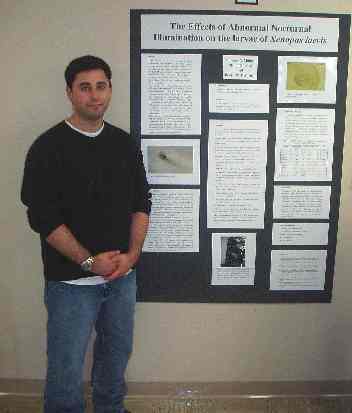Mittiga, M.A., Wise, S.E., and Buchanan, B.W. 2004.
The effect of abnormal nocturnal illumination on the larval development of Xenopus laevis.

Light pollution is rapidly becoming a major environmental issue. Research has shown that exposure to bright nocturnal lighting retards the development of amphibians, slowing growth, but no data exist indicating the threshold levels of night lighting that may cause developmental delays. We propose that larvae of Xenopus laevis will suffer a retardation in development that is reflective of the intensity of nocturnal illumination they are exposed to. We exposed replicates of multiple genotypes of African clawed frog tadpoles (Xenopus laevus) to normal levels of diurnal illumination (12 h at 100 lx) and a gradient of nocturnal illuminations (12 h at 0.01, 0.1, 1, 10, or 100 lx). Thus, members of each treatment were exposed to varying levels of darkness at night but the same daylight. Three groups of genotypically distinct larvae were obtained from a commercial source. The larvae are housed in ten compartments of 24 individuals each. Each genotype has an equal number of representatives per compartment. The position of the treatments on shelves is randomized, and the intensity of the nocturnal illumination in the compartments ranges from 0.01 lux to 100 lux, at 1 order-of-magnitude increments. The larvae will be allowed to develop for 30 days. At the conclusion of the study, mortality and size will be compared among the different nocturnal illumination treatments.

